A Guide to De La Soul’s Pioneering Early Albums, Finally Available on Streaming Services
- Oops!Something went wrong.Please try again later.
- Oops!Something went wrong.Please try again later.
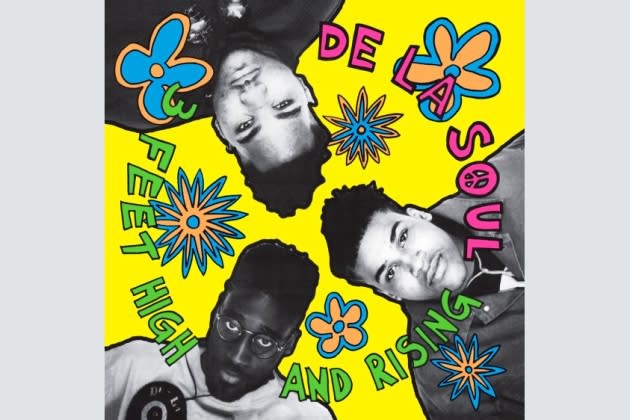
It’s impossible to overstate the impact of De La Soul on hip-hop music and its culture — but for decades, their groundbreaking early albums were not widely available, due to a morass of legal complications that kept them out of circulation, and, crucially, off of streaming services. But today, the shackles are off, the samples are cleared (or worked around) and the albums, most notably their galvanizing platinum 1989 debut “3 Feet High and Rising,” can be streamed legally.
The group had the great misfortune of being a precedent for now-common sampling laws, and the dense thicket of samples on their albums, and other associated legal dramas, kept their music out of mainstream circulation for many years. But as part of its acquisition of the Tommy Boy Records catalog, New York-based Reservoir Media has resolved the litigious quagmire that surrounded the group’s first six albums, allowing the group to distribute them on streaming platforms (and vinyl) via Chrysalis Records.
More from Variety
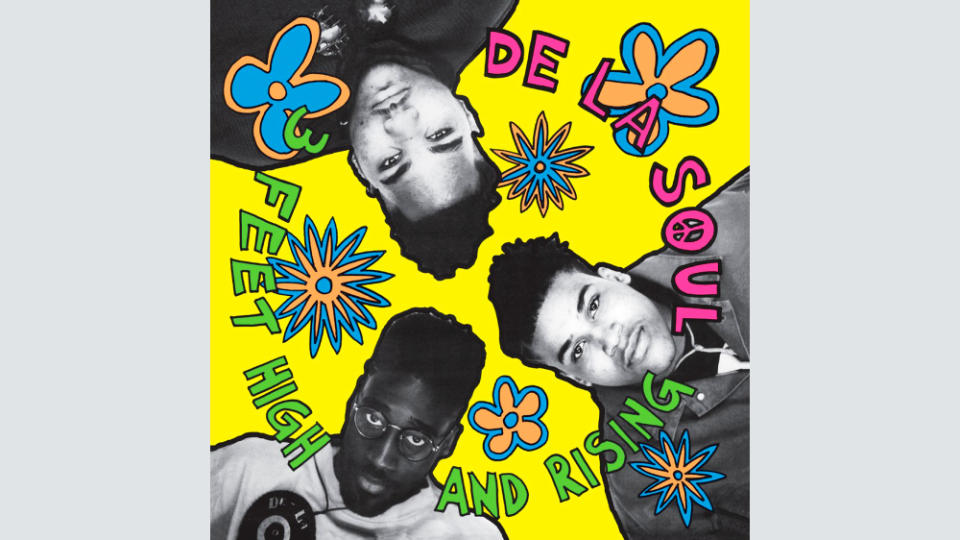
“3 Feet High and Rising” is one of the most important and pioneering albums in hip-hop history — yet even as one of the biggest hits from the album, “The Magic Number,” was used over the end credits for the 2021 blockbuster film “Spider-Man: No Way Home,” the song was not legally available to stream or purchase. But today — and tragically, less than a month after the death of the group’s cofounder Dave “Trugoy the Dove” Jolicoeur — all of that changes.
A visionary musical mashup that covers a kaleidoscopic (and ultimately very litigious) array of samples — everything from Johnny Cash to Steely Dan to the Turtles — “3 Feet High” brought the streets and the suburbs together like nothing before it. While hip-hop largely had an aggressive and at times violent image — see Public Enemy, Ice-T and N.W.A — by 1989, there were already pop-friendly rappers like DJ Jazzy Jeff and Fresh Prince, whose 1987 sophomore album “He’s The DJ, I’m the Rapper” went triple platinum and won the first ever rap Grammy. But De La Soul preserved the soul — both existential and literal — in between hip-hop’s hard edges, with a peaceful and psychedelic vibe that still did not shy away from the realities of urban life, a complexity reflected as vividly in the trio’s lyricism as in the pioneering production by former Stetsasonic DJ Prince Paul.
Loosely framing their songs with a “game show” (which played no small role in the proliferation of skits that bogged down so many hip-hop albums for years to come), Prince Paul stitched together the group’s mischievous creativity into a musical and existential journey that rejected traditional signifiers of wealth or success, expressed thoughtfulness and vulnerability, and exuded exuberance and plain old fun. While the trio looked out at their culture and inward at themselves, Paul matched their insights and impishness with musical detours that flowed effortlessly like pieces from dozens of different puzzles that somehow fit perfectly together, such as bouncing from an earnest love song (“Eye Know”) to a dismantling of consumerist trends (“Take It Off”) to an environmental call-to-arms (“Tread Water”). Additionally, their singles not only featured some showstopping, good-the-the-original track remixes, but B-sides like “Brain Washed Follower” and the “Muppet Show Theme”-sampling “Double Huey Skit” that further explore themes covered on the album. But perhaps most of all, it was incredibly, effortlessly catchy from start to finish without capitulating to anything even remotely trendy.

They would unfortunately not enjoy the same freedom from outside or within on “De La Soul is Dead,” an even more ambitious and yet surprisingly defensive follow-up that slapped back at critics of the group’s “D.A.I.S.Y Age” philosophies — starting with cover art depicting a knocked-over pot of the yellow flowers. Even as Paul deepened and diversified his foundation of samples (Serge Gainsbourg, the Doors, Tom Waits), the three rappers reflect on the pitfalls of success while doubling down on their commentary on cultural and social ills many of their contemporaries were only too happy to exploit.
Though the record didn’t produce as many hit singles as its predecessor, “De La Soul is Dead” took many years to be fully appreciated — including by fans. Even by the group’s own standards it was a maximalist effort, folding in more skits and digressions than “3 Feet High” (this time with a children’s book theme instead of a game show) and foraging musical territory that was not as consistently pleasant as before; tracks like “Johnny’s Dead AKA Vincent Mason (Live from the BK Lounge)” and “Afro Connections at a Hi 5 (In the Eyes of the Hoodlum),” even when tongue in cheek, lean more heavily towards bitterness than the buoyancy of the past. Remixes and B-sides from the album brought some lightheartedness, like “What Yo Life Can Truly Be,” where Paul adds a chorus of Woody Woodpecker laughing over their dance-party single “A Roller Skating Jam Named ‘Saturdays’” and enlists A Tribe Called Quest member Q-Tip for a verse.
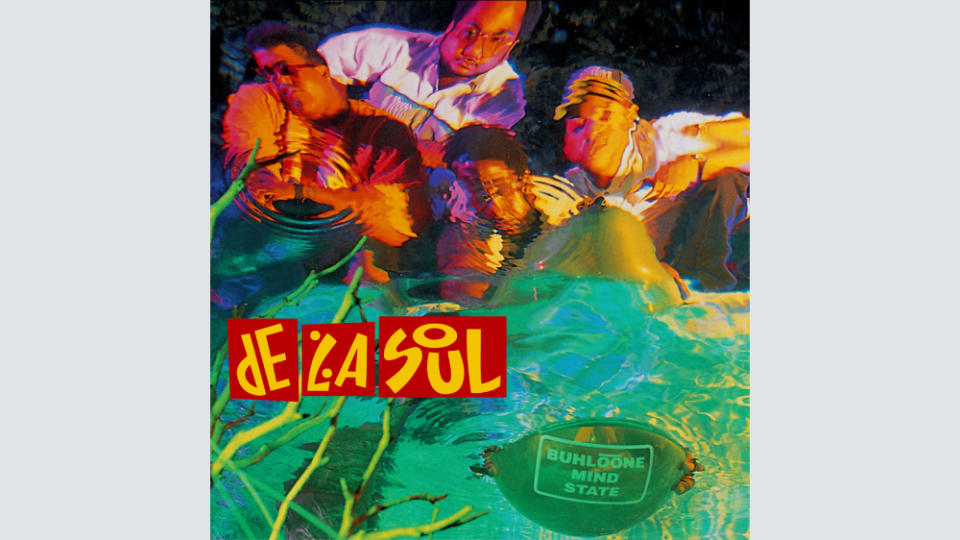
To call the group’s third album, “Buhloone Mindstate,” more restrained is a claim one could only make with De La Soul’s discography: at 15 tracks it was their shortest album to date, and its interludes are either too brief or too weird to qualify as skits in the way they were created for the two previous ones. But unlike, say, A Tribe Called Quest’s deep-cut jazz samples, Paul and the trio embraced the spirit of jazz (and a few real-deal luminaries) for a record that is colorful, dynamic and perhaps their most introspective. If it’s easy to forget how brave it was at the time for Posdnuous to rap “Fuck being hard/ Posdnuos is complicated” on “In the Woods,” listening to the whole record now only reiterates how out of step it was with virtually all of hip-hop at the time, and why so little else in the history of the genre sounds like it.
It’s a record that features legendary James Brown/P-Funk/Prince saxophonist Maceo Parker to play on three tracks, one of which is just an instrumental over which Parker riffs. It’s a record where Japanese rappers SDP and Tagaki Kan melt down American hip-hop fans’ ears with a 90-second showcase of rap’s reach into other cultures. And it’s a record where Posdnuos and Trugoy unspool their autobiographies, encapsulating personal, professional, economic and artistic struggles with a balance of honesty and optimism that has become synonymous with their best work. In interviews, Paul says that it’s the record many comedians (including Chris Rock, whose “Bigger and Blacker” he produced) say is their favorite of his, despite its absence of the madcap humor he brought to his prior collaborations with the group.

Paul and De La Soul parted ways ahead of their fourth album “Stakes Is High,” which further explored their preoccupations with the recording industry and the state of hip-hop. The trio produced the lion’s share of the LP themselves, a choice that unifies the sound of the record but eliminates the idiosyncrasies — and possibly, the personality — that Paul brought to their music. As a result, the record comparatively feels much more generic than its predecessors, even if there are more than a handful of great tracks, including “Supa Emcees,” “The Bizness” (featuring Common), and the Jay Dee-produced title track.
In the looming shadow of their work with Prince Paul, the record simply could not compare, but it was a necessary step for both the group and their iconic producer. While Paul teamed up with Dr. Octagon/ Gorillaz producer Dan the Automator for Handsome Boy Modeling School, De La embarked on what might have proven to be their most ambitious project yet: a triple album called “Art Official Intelligence.” Producing for themselves again — save for some pinch-hitting by J Dilla, chart-topper Rockwilder and Paul on the club banger “Ooooh.,” they delivered it in sections, starting with “Mosaic Thump” in 2000, and a follow-up, “Bionix,” a year later.
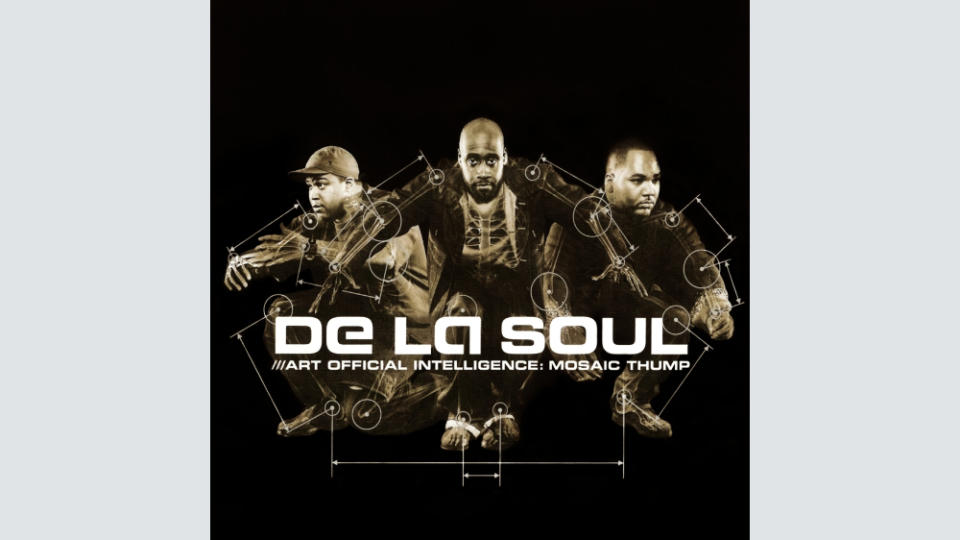
“Mosaic Thump” featured a revolving door of guest stars including Redman, Xzibit, Busta Rhymes, Mike D and Adrock of Beastie Boys, and even singer Chaka Khan. But although their subject matter was still razor-sharp, the production feels too similar to what else was going on in hip-hop at the time. The Chaka Khan-featuring “All Good?” could easily have been performed by Fabolous or Ja Rule, for example; and for better or worse, the Marvin Gaye-sampling “With Me” sounds like a dry run for Erick Sermon’s “Music,” which a year later reached number two on the US Hot R&B/ Hip-Hop Songs chart.
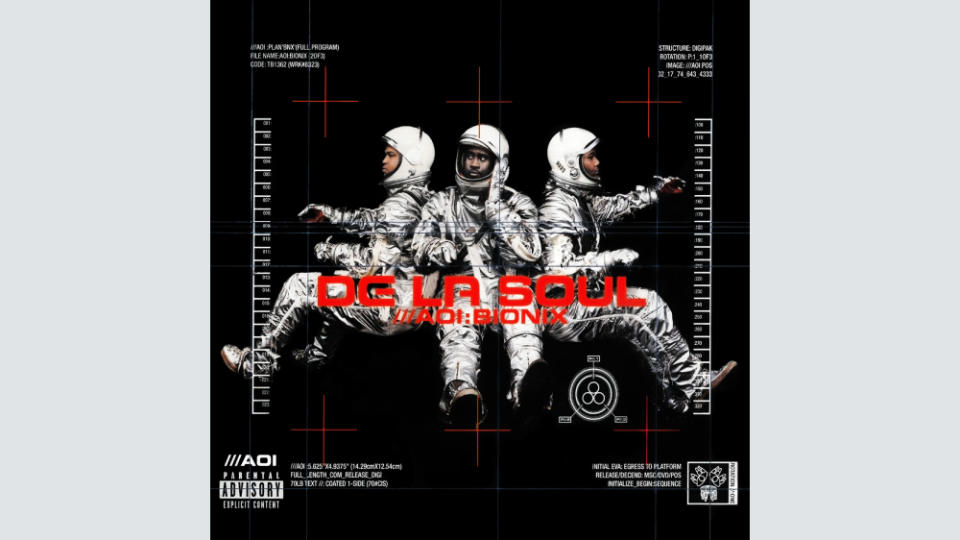
“Bionix” is similar but different: handling the lion’s share of the producer again by themselves, De La Soul sticks with midtempo beats even as they fold in intriguing samples from Cal Tjader and Paul McCartney (the latter making “Wonderful Christmastime” funky for the first and only time in the song’s history). They even revived skits for the record, with a thread starring “Reverend Do Good,” a character who enabled them to offer additional social commentary. While like on the first installment there are a handful of tracks that bump, these mid-career recordings suffer from an absence of the adventure, irreverence and exploration of their early releases.
These six albums, arriving after so many years in the wilderness, are like a time capsule from a formative age, revealing influences that — due to their long absence from the mainstream — generations of hip-hop fans probably weren’t aware of. What will they think? Time will tell. But finally, after decades of waiting (and contrary to the title of their second album), De La Soul’s music is widely available, for generations to come.
Best of Variety
From 'Daisy Jones & The Six' to 'Blonde': Books Made Into Movies and TV Series That You Should Read
Oscar Predictions: Documentary Short - Could ‘Stranger at the Gate’ Surprise on Oscar Night?
Sign up for Variety’s Newsletter. For the latest news, follow us on Facebook, Twitter, and Instagram.

